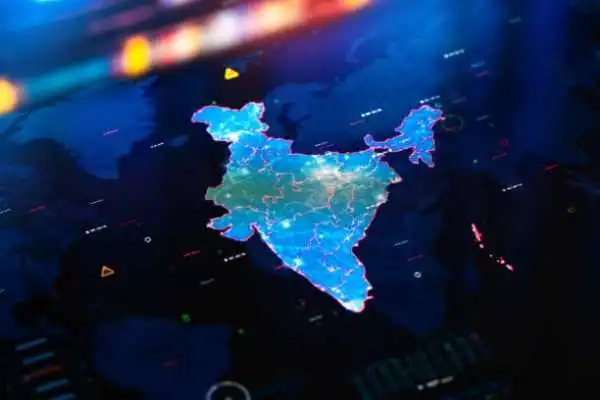India, a land of timeless charm and rich heritage, boasts one of the world’s oldest and most diverse histories. From the ancient civilizations of the Indus Valley to the freedom struggle against British colonial rule, the story of India is a captivating blend of cultures, kingdoms, empires, and revolutionary movements. In this blog, we’ll explore the history of India across various eras — ancient, medieval, and modern — and understand how this nation has evolved into the world’s largest democracy.
Ancient India: Cradle of Civilization
The history of India begins with one of the world’s earliest urban civilizations — the Indus Valley Civilization (around 2500 BCE to 1900 BCE). Located in what is today Pakistan and northwest India, this civilization was known for its advanced urban planning, drainage systems, and trade networks. Cities like Harappa and Mohenjo-daro were well-planned, featuring grid layouts, public baths, and sophisticated architecture.
Following the decline of the Indus Valley Civilization, India witnessed the Vedic Period (1500 BCE to 600 BCE), marked by the arrival of the Indo-Aryans. The Vedas, some of the oldest sacred texts in the world, were composed during this time. This era laid the foundation for Hinduism, and social structures like the varna system began to emerge.
Rise of Great Empires
The 6th century BCE saw the rise of powerful kingdoms known as Mahajanapadas. Around the same time, two major religions — Buddhism and Jainism — were born, offering new spiritual alternatives and spreading rapidly across Asia.
In 322 BCE, Chandragupta Maurya founded the Maurya Empire, which became one of the largest empires in Indian history. Under Emperor Ashoka the Great, the empire reached its peak and later embraced Buddhism, promoting non-violence and religious tolerance.
After the Mauryas, the Gupta Empire (around 320 CE to 550 CE) ushered in a Golden Age of India. This period saw tremendous achievements in science, mathematics, astronomy, literature, and art. Notable scholars like Aryabhata, Kalidasa, and Charaka emerged during this time.
Medieval India: Kingdoms and Cultural Synthesis
The early medieval period (600 CE to 1200 CE) witnessed the rise of regional kingdoms such as the Chalukyas, Pallavas, Cholas, and Rashtrakutas in the south, and the Rajputs in the north. These kingdoms made significant contributions to architecture, especially in temple construction.
Islamic Invasions and the Delhi Sultanate
In the 12th century, India saw invasions from Central Asia, leading to the establishment of the Delhi Sultanate (1206–1526). This period introduced Islamic culture to the subcontinent and saw the construction of remarkable monuments like the Qutub Minar. Persian became a prominent language, and Indo-Islamic art and architecture flourished.
The Mughal Empire
One of the most significant periods in Indian history came with the establishment of the Mughal Empire in 1526 by Babur, a descendant of Timur and Genghis Khan. Under emperors like Akbar, Jahangir, and Shah Jahan, the empire expanded vastly and developed a rich cultural and administrative system. The Mughals were patrons of the arts, and masterpieces like the Taj Mahal, built by Shah Jahan, remain icons of India’s architectural brilliance.
Akbar’s policy of religious tolerance and his creation of a centralized administration made the Mughal Empire one of the most influential in Indian history. However, the later rulers like Aurangzeb followed more orthodox policies, leading to internal conflicts and decline.
Colonial India: The British Raj
The late 17th and 18th centuries saw the arrival of European trading companies. While the Portuguese and Dutch had early influences, it was the British East India Company that gradually took control of Indian territories. The Battle of Plassey in 1757 marked the beginning of British political dominance in India.
By the mid-19th century, following the Revolt of 1857 — also known as India’s First War of Independence — the British Crown took direct control, marking the beginning of the British Raj (1858–1947). During this period, India saw massive infrastructural development but also faced economic exploitation, famines, and social unrest.
The Freedom Movement
India’s struggle for independence was a long and arduous journey. Mahatma Gandhi emerged as a central figure, leading non-violent movements such as the Salt March, Quit India Movement, and Civil Disobedience Movement. Other key leaders like Jawaharlal Nehru, Subhas Chandra Bose, Bhagat Singh, and Sardar Patel also played pivotal roles in mobilizing the masses.
After decades of protest and negotiation, India gained independence from British rule on August 15, 1947. However, this freedom came at a cost — the Partition of India into two nations, India and Pakistan, led to widespread violence and one of the largest mass migrations in history.
Post-Independence India: Building a Nation
Independent India adopted a democratic constitution in 1950, with Dr. B.R. Ambedkar as the chief architect. The country became a sovereign, secular, and socialist republic, holding regular elections and building a parliamentary democracy.
India focused on industrialization, economic reforms, and scientific advancement in the subsequent decades. Despite challenges like wars with neighboring countries, economic crises, and internal conflicts, India emerged as a strong, diverse, and resilient nation.
Modern India
Today, India is one of the fastest-growing economies in the world and a global leader in technology, space research, and innovation. From launching the Chandrayaan missions to being a top exporter of software and services, modern India blends tradition with modernity.
The country continues to celebrate its cultural diversity, with over 22 official languages, hundreds of dialects, and a multitude of religions coexisting.
Conclusion
The history of India is not just a timeline of events but a vibrant story of civilizations, ideas, struggles, and achievements. It reflects a journey from ancient glory to colonial struggle, culminating in independence and global prominence. Understanding India’s past allows us to appreciate its present and envision a more inclusive and progressive future.
Whether you are a student, traveler, or history enthusiast, exploring the history of India opens a window into one of the richest cultural legacies the world has ever known.
